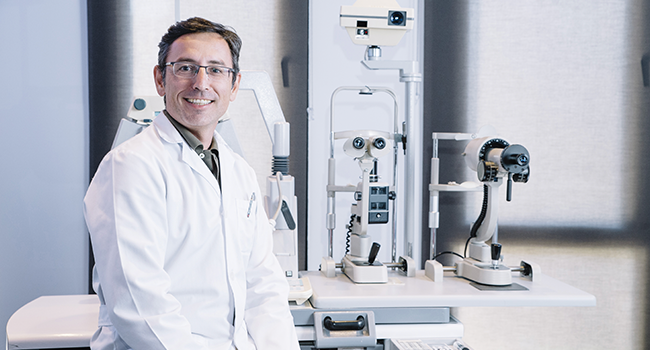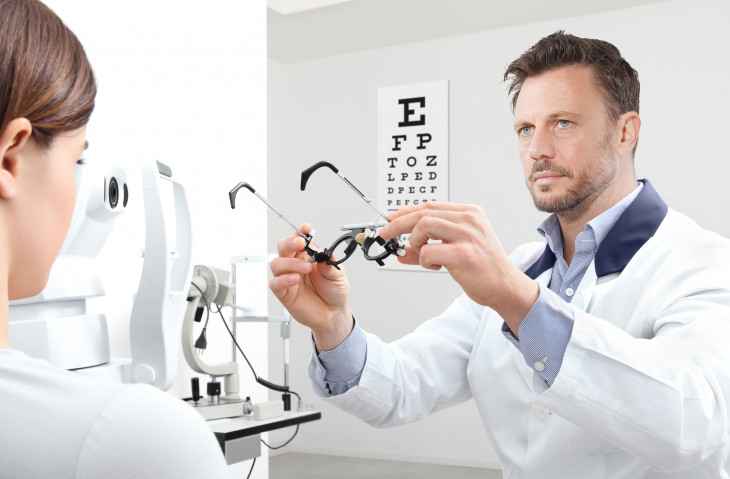The Value of Regular Exams with an Eye Doctor Optometrist
The Value of Regular Exams with an Eye Doctor Optometrist
Blog Article
Checking Out the Latest Technological Advancements in Optometry and What They Mean for Eye Doctors
In the ever-evolving area of optometry, current technical developments are reshaping how practitioners come close to eye treatment. From the precision of Optical Comprehensibility Tomography to the nuanced insights provided by AI-driven diagnostic tools, these innovations are establishing new standards in client evaluation and therapy. Teleoptometry is positioned to redefine ease of access, making sure that expertise transcends geographical constraints. As these advancements penetrate the practice, eye doctors are confronted with the difficulty of welcoming these devices to boost individual results. Yet, the question remains: exactly how will these technological changes redefine the duties and responsibilities within the career?
Developments in Diagnostic Devices
Advancing the field of optometry, advancements in analysis tools have actually reinvented the way eye treatment experts examine and diagnose ocular problems and aesthetic impairments. The previous decade has witnessed significant technological improvements, making it possible for even more exact and thorough evaluations.
Another key advancement is the intro of sophisticated corneal topography systems, which map the surface curvature of the cornea with accuracy. These tools are particularly useful for fitting call lenses and detecting corneal conditions. Digital retinal imaging has changed standard ophthalmoscopy, offering in-depth, breathtaking sights of the retina that facilitate complete aesthetic examinations.
The growth of wavefront aberrometry has actually likewise been important, enabling the analysis of refractive mistakes with unrivaled accuracy (Eye Doctor). This innovation assists in tailoring corrective lenses and improving surgical outcomes for refractive surgical treatments. Jointly, these diagnostic improvements empower optometrists to provide premium patient treatment, guaranteeing early treatment and customized treatment techniques, eventually boosting aesthetic health end results
AI in Patient Management
Structure on the structure of advanced analysis devices, the unification of synthetic intelligence (AI) in patient monitoring stands for a transformative leap for optometry. AI systems are progressively employed to enhance performance, precision, and personalization in individual treatment. By analyzing large amounts of data, AI can identify patterns and forecast potential eye conditions, allowing optometrists to customize interventions better. This capability is crucial in taking care of chronic eye diseases such as glaucoma and diabetic retinopathy, where very early detection and continuous surveillance are crucial.
Moreover, AI-driven systems help with structured client interactions and administrative procedures. Automated organizing, virtual assessments, and personalized follow-up plans not just boost patient contentment but additionally enhance time management for specialists. These systems can triage individuals based upon the seriousness of their conditions, making certain that those in important demand get punctual attention.
Moreover, AI enhances decision-making by offering optometrists with evidence-based referrals and therapy pathways. By integrating data from digital health and wellness documents, AI devices offer understandings that notify professional decisions, lowering the risk of errors and improving person end results. As AI continues to evolve, its duty in client administration will likely broaden, improving the landscape of optometric care.
Developments in Retinal Imaging
In the realm of optometry, retinal imaging has actually observed exceptional technical advancements that are boosting diagnostic capabilities and client care. Innovations such as Optical Comprehensibility Tomography (OCT) and fundus photography have revolutionized exactly how optometrists assess the retina and picture.
Enhanced imaging methods like OCT angiography are further refining analysis precision. This non-invasive technique maps blood circulation in the retina, supplying essential understandings into vascular health and wellness without the need for color injections. In addition, flexible optics innovation is being incorporated into retinal imaging systems to deal with ocular aberrations, supplying unprecedented photo clarity. Such improvements promote the recognition of min retinal changes that might signify illness progression.
In addition, advancements in synthetic intelligence are enhancing retinal imaging by making it possible for automated analysis of big datasets. These systems assist optometrists in identifying patterns a measure of pathology, therefore enhancing diagnostic accuracy and performance. Collectively, these advancements read what he said are changing retinal imaging into a foundation of modern-day eye treatment, boosting outcomes and broadening restorative opportunities.
Teleoptometry's Expanding Duty
Teleoptometry is progressively ending up being a crucial part of eye care, driven by innovations in electronic interaction and analysis tools. As optometry embraces digital makeover, teleoptometry assists in remote assessments, enabling optometrists to extend their services beyond typical borders. This is especially useful in country and underserved areas where accessibility to specialized eye care is usually limited. By leveraging high-resolution video conferencing and progressed retinal imaging, eye doctors can conduct comprehensive eye exams from afar, making certain timely diagnosis and treatment.
The combination of expert system (AI) additional boosts teleoptometry, allowing the analysis of visual information and assisting in the detection of eye conditions such as glaucoma and diabetic person retinopathy. AI-powered algorithms can swiftly interpret intricate imaging information, supplying optometrists with beneficial insights that strengthen clinical decision-making.
In addition, teleoptometry supports connection of care with smooth integration with digital wellness documents (EHRs), allowing optometrists to keep comprehensive patient backgrounds. This ensures that individuals obtain personalized and constant care even when consulting with various practitioners.
In spite of these benefits, obstacles stay, consisting of ensuring data safety and taking care of individual expectations. Nevertheless, teleoptometry represents a significant stride in the direction of even more accessible, reliable, and patient-centered eye care. As modern technology evolves, its function is poised to expand additionally.

Future Trends in Eye Care
A myriad of innovative trends is established to improve the future of eye treatment, driven by technological developments and the advancing requirements of clients. One considerable trend is the integration of expert system (AI) in diagnostics, which promises to boost the precision and performance of eye examinations. AI algorithms can assess vast amounts of data from retinal images, potentially finding problems like diabetic retinopathy and glaucoma earlier than typical methods.
Furthermore, individualized medicine is gaining grip in optometry, their website with hereditary testing informing tailored treatment strategies. This technique aims to enhance individual results by customizing treatments to specific hereditary accounts. Wearable innovation, such as smart call lenses, is likewise coming up, using real-time tracking of intraocular stress or glucose levels, hence offering continual insights into systemic and ocular health.
The adoption of augmented fact (AR) and online reality (VR) in training and person education is an additional emerging pattern. These innovations provide immersive experiences that can enhance understanding and abilities both for patients and optometrists. As these trends evolve, eye doctors must stay abreast of technical innovations to offer sophisticated care, making sure enhanced person outcomes and fulfillment in the dynamic landscape of eye treatment.
Verdict

Collectively, these analysis innovations encourage eye doctors to provide exceptional patient treatment, guaranteeing early treatment and tailored treatment techniques, ultimately boosting aesthetic health end results.

As these modern technologies proceed to develop, eye doctors have to adjust and include them into technique, ultimately enhancing operations efficiency and elevating the requirement of eye treatment supplied to patients.
Report this page